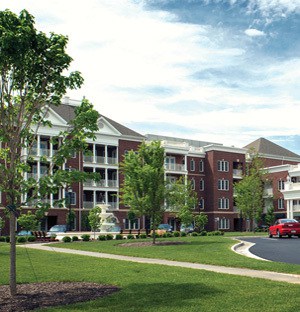Senior living campuses age — just like the rest of us.
Whether in need of a little facelift or major reconstruction, continuing care retirement communities (CCRCs) across the nation are undergoing upgrades, additions, and new construction in response to changing market dynamics and demand. No matter the type of building project, all senior living entities share one primary concern: making sure the community and staff are equipped to successfully undergo construction and improvements while remaining fully operational.
Construction teams need to understand and respect the need to balance construction operations and activities with the CCRC’s ongoing activities. It takes a tremendous amount of planning to work safely and efficiently while also ensuring that each aspect of construction remembers residents’ wants and needs, and helps owners maximize their investment.
Here are three planning issues to consider at all stages of construction in an occupied and operational senior living environment:
-
- SAFETY. Resident and staff safety are paramount, and protecting the lives and safety of building occupants and field teams remains top priority during construction. Residents are naturally interested in construction activities, and — when residents are involved with planning — an environment of trust and increased safety is established. At the launch of a project, we often hold Town Hall style meetings to answer questions from residents and staff. This is a great time to hear and understand client concerns and to educate about construction schedule and safety precautions. By posting current construction schedules and meeting each morning with the facilities director, we create a community of communication.
-
- TEAMWORK. When working in an occupied care facility, a lot of cooperation is involved. Again, transparency and communication are vital. Essential is maintaining compliance with local building and fire department requirements and all Department of Public Health regulations. Throughout construction, we also maintain tight management of a network of subcontractors, always making sure the site has optimal emergency vehicle access and avoids impact to resident life. We know that a big part of our job is to protect elderly residents and patients.
-
- SCHEDULE. Each resident’s schedule, that is. Thorough pre-planning and organization, ongoing, clear communication, and constant attention to detail must be in place in order to know resident schedules and activities. The construction team must provide hands-on coordination and proactive communication — both essential to minimizing disruption to patient/resident routine.
We ask questions: What are the typical morning and afternoon activities for residents? When do deliveries come in? At what time do residents usually walk their dogs? Flexible construction schedules can help residents avoid noise, dust, and other inconveniences, so builders should plan out phases in coordination with owners and subcontractors to create the safest, most efficient schedule possible. For example, to avoid shut downs during meal time, all plumbing work for a dining hall might be performed during evening hours.
With careful pre-planning, ongoing communication, and team-focused collaboration, construction in occupied care environments can be a win for everyone. There can never be too much communication when building around places that people call home.

